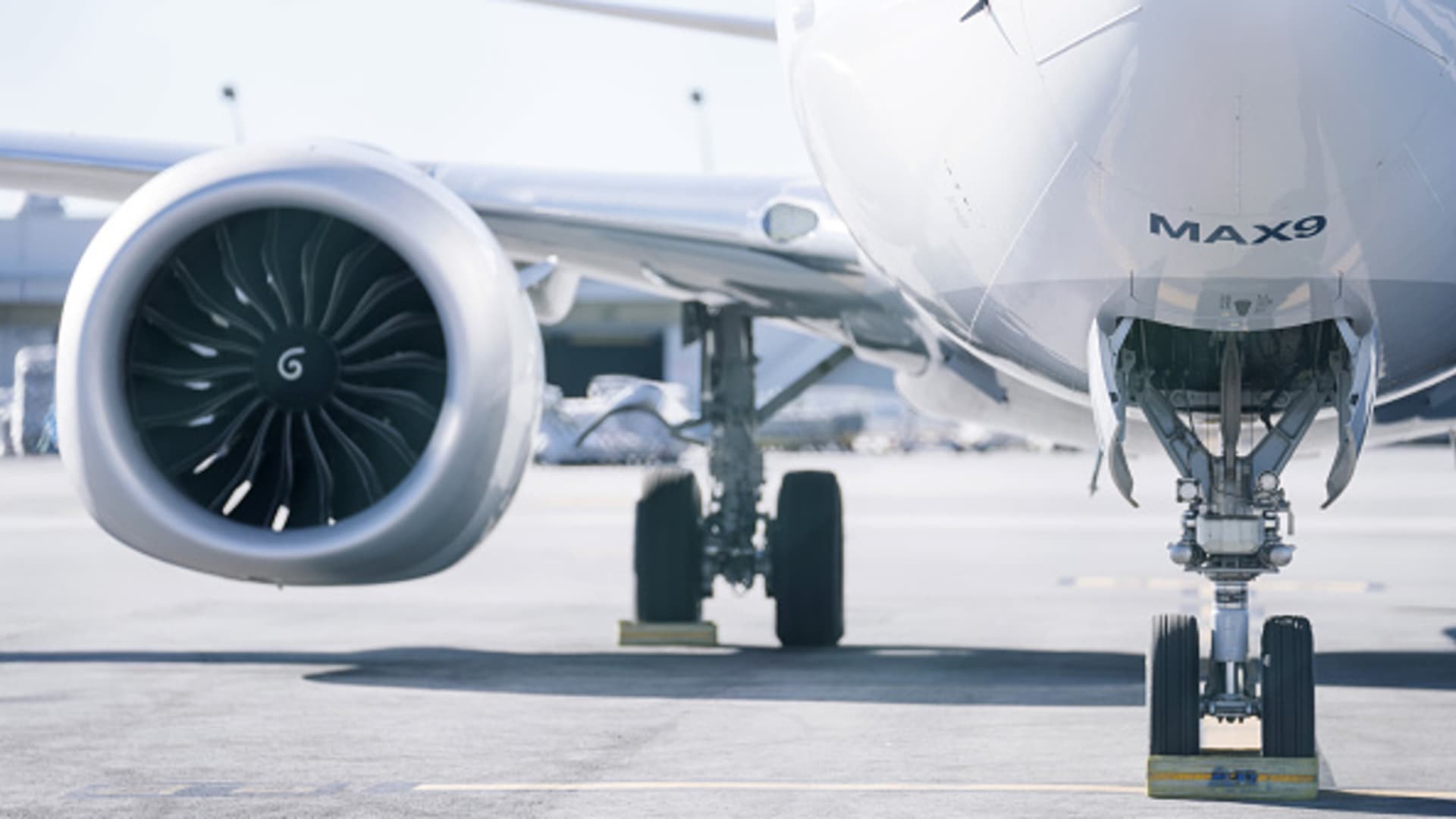Aircraft design is a marvel of modern engineering, where every component serves a purpose driven by safety, efficiency, and aerodynamics. Two significant aspects of this design that often intrigue people are the storage of fuel in the wings and the common practice of painting airplanes white. These choices are not arbitrary; they are rooted in practical and scientific considerations that ensure the aircraft’s optimal performance. In this article, we will delve into why most aircraft store fuel in the wings and are painted white, exploring the engineering, safety, and operational advantages of these practices.
One cannot help admiring the design of modern aircraft everything in its structure seems to have a rationale, every component being governed by the need for safety, efficiency or aerodynamics. One of the things that people wonder about when it comes to aircraft is why their fuel is stored in the wings, and why we routinely paint airplanes white. Both of these are actually very practical and scientific considerations, with multiple engineering, safety and operational benefits that apply. In this article, let us explore the rationale behind why most planes store fuel in their wings and are painted white.
Fuel Storage in Aircraft Wings: Structural Efficiency and Weight Distribution
One main reason that it makes sense to store some fuel in the wings is structural efficiency. It is desirable to store things inside any reinforced structure as that adds strength without adding weight. Aircraft wings are the strongest part of the plane, constantly designed to withstand the forces acting upon the fuselage when it is in the air. Why not simply put the special tanks inside the wings so the structure can do the work for very little added cost once it’s there? It’s a win/win as it lightens the overall weight and helps to create a better centre of gravity. This, in turn, aids flight.
Furthermore, the distribution of its weight helps to reduce the bending stress on the fuselage of the aircraft. Throughout the flight of the aircraft, the wings exert outward lift forces that try to bend the wings toward the sky. The inward pull exerted by the aircraft fuselage on the wings is in opposition to the upward pull of lift. This pull tends to bend the junction between the wings and the fuselage and therefore increases the stress on the wing structure. The fuel burns in a controlled manner, converting it into heat energy In the case of a normal aircraft that uses the wings to carry fuel, the weight of the fuel further reduces the pull exerted by the lift on the wing structure, promoting the constant inward pull of the fuselage. Hence, the weight of the wing’s fuel reduces the stress on the fuselage structure at the wing and fuselage junction, prolonging the life of the aircraft and improving its handling. The positioning of the fuel within the wings promotes another essential safety mechanism: heat dissipation. As the aircraft flies, the fuel loaded within the wings keeps exerting forces on their structure, regardless of the nature of the forces involved. For the wing fuel to be used during flight, it has to come down to the engines, be subjected to chemical reaction and turn to vapour, a process that requires meeting certain temperature ranges, otherwise it either freezes before reaching the engines or overheats.
Safety Benefits of Wing Fuel Storage
First of all, safety comes first in aviation, and putting fuel in the wings is also a matter of safety considerations. Coming back to my point about fuel, having the fuel stored in the wings is safer than placing them inside the fuselage. In the event of an emergency landing or a plane crash, if the fuel in stored in the wings, in the worst-case scenario, a fire won’t lead to a catastrophic fire inside the plane’s fuselage.The wings of an airplane are positioned far away from the passenger’s cabin. This leaves an empty space between the wings and the fuselage. would affect the cabin and the passengers mildly.People working in the field of aeronautics are well aware of the fact that an aircraft might experience surprising unexpected movements. To ensure safety, wings are equipped with fuel tank venting systems, surge tanks, etc that manage the spaces between the fuel tank walls and the wing’s structures, meaning they allow airflow and deal with pressure changes that may occur during abrupt maneuvers.
A further safety measure of storing fuel in the wings is that the aircraft’s design for survival when things go wrong includes wing structure that is likely to stay intact in the event of a hard landing. This means that the fuel in the aircraft’s wings are less likely to rupture than if they were in other parts of the airplanes. This reduces the risk of fuel spillage and fires – in addition, the wings are fitted with fire suppression systems which have very rapid responses, meaning that any flames that do occur there are likely to be extinguished very swiftly. This system, together with the very strong structure of the wings, is a reason why the airplanes are safer in critical situations, accounting for the reliability of modern travel by air.
Aerodynamic and Operational Advantages of Wing Fuel Storage
But storing fuel in the wings also has important aerodynamic benefits. It gives engineers more control over the aircraft’s balance point, called its ‘centre of gravity’. Planes will fly much better and consume less fuel if their weight is evenly distributed, so a plane designed with smaller amounts of fuel in the nose or tail will need to be ‘trimmed’ (sometimes via an mechanically appended tab) by the pilot to remain stable. Storing the fuel in the wings minimises the need for trim, which itself has been proven to produce lower drag and greater fuel efficiency. And that has a knock-on effect on the passenger experience: a stable aircraft is one that flies more smoothly. Flying just might one day feel a lot like taking an elevator The wings are also surprisingly large by comparison with the rest of the aircraft, which makes them very efficient from an engineering perspective. The tail, in particular, has to be short and steeply angled to produce the necessary lift, which means that, relative to its huge horizontal surface area, there can be a surprisingly small amount of fuel in it before it begins to turbulently disrupt unwanted wake. The same is true for the nose.
Operationally, the storage of fuel in the wings simplifies fuel management for the crew, as weight distribution changes gradually and predictably with fuel burn – helping us keep control of the aircraft. Particularly on flights that last more than six or seven hours, where the aircraft is getting lighter as the fuel is consumed, keeping a balanced airplane is a critical skill for a pilot to learn. Moreover, wings make perfect sense because tanks can be refuelled readily, quickly and efficiently at an airport. By having the fuel tanks in the wings, we allow ground crew to get at the airplane and fuel it more quickly. Quick turnarounds of an aircraft are an important aspect of an airline’s operations, and wing fuel helps to keep airlines profitable.
The Role of Aircraft Paint: Why Most Airplanes are White
While there are advantages to aesthetics, the decision to paint airplanes white is more about practicality than artistry. White paint reflects sunlight, which ultimately helps aircraft stay cool on the ground and in the sky. On hot tarmacs, the highly reflective paint protects airplane fuselages by keeping them from absorbing excessive heat that could directly impact the comfort of the people on board, not to mention affect the internal systems of the plane. White also has another less obvious advantage: it is far more resistant to fading from ultraviolet (UV) radiation. That means a painted airplane will stay looking new for much longer, thereby eliminating the need for repainting almost entirely.
Besides ensuring that the aircraft looks good, the paint job on an aircraft is mostly for safety and visibility; white airplanes are easier to sight from both the sky and the ground, which is important for avoiding collisions. The aircraft is always bright and visible, especially during takeoff, landing and taxiing, which typically happens in low-light conditions or less than ideal weather. Because the white blankets the contours of the airframe, it makes it easier to spot damage to the surface of the aircraft (trail of cracks, dented panels, or corrosion) when inspected. This reduces time for maintenance crews checking for damage and helps airlines make safety a priority.
Economic and Environmental Benefits of White Aircraft
What aren’t cosmetic are the economic benefits that painting planes white provides. White is normally lighter than darker shades, and lighter paint adds up to weight lost, and therefore fuel saved. Fuel costs a great deal of money to airlines, so a lighter aircraft costs less to operate. A lighter aircraft also produces lower carbon emissions, which matter in the environmental ledger of aviation. Any savings in energy usage on the ground lowers the energy usage of planes on the ground. Over the lifetime of an aircraft, these savings can therefore be considerable. Nothing embraces cost-cutting like the colour white.
What is more environment-friendly: white or black airplanes?Have you ever wondered why almost all airplanes are painted white? Is it for the airline reasons or can it help with sustainability?Firstly, the lighter paint of a the airplane is made of less material than other colours. Secondly, the white paint reacts better with thermal heating compared with the other colours.That results in a reduction of fuel consumption and the airplanes have lower carbon emissions.White paint also lasts longer than other colours, is less abradable, less susceptible to UV degradation and less reflective than other colours, and so airplanes do not need to be repainted as often. That leads to a reduction of the negative environmental impact that is related to the manufacture and application of paint which involves a plethora of chemicals and energy.Overall, the profitable prospect for the airlines comes down to an environmental advantage, too.
How White Airplanes and Wing Fuel Storage Complement Each Other
Having the fuel stored in the wings, and painting the aircraft white in a reflective colour, are two distinct but related aspects of aircraft design. Both work together to improve the safety, efficiency and performance of the current aircraft. Because the fuel in wings is stored at a temperature slightly above room temperature, the white paint on the aircraft helps to reflect sunlight better, thus keeping the wings at a stable temperature and reducing the chance of overheating, either at high latitudes for long-haul flights or in temperate regions with high ambient temperature. As such, the synergy between these two design aspects helps the aircraft to stay at the best operating conditions and minimise the risk of mechanical failures associated with high temperatures.
In addition, the wing fuel storage increases the general life of an aircraft and makes it more dependable. On the other hand, the structure of an aircraft can be stressed especially in takeoff and landing, which is why a balanced weight distribution helps reduce mechanical force. The additional safety concerns for an aircraft during takeoff are shared by its passengers, which is why it is essential for the longevity of the fleet. In addition to good weight distribution, the reflective paint helps it retain a stable temperature, which reduced the strain on the aircraft, and ensures a longer life, saving money for airlines who will need to conduct fewer maintenance checks and down times. All in all, these design features are great illustrations of the way careful engineering can enhance the safety, efficiency and operational effectiveness of a whole industry such as aviation.
Conclusion
The design choices behind where planes store fuel and why they are painted white are the result of meticulous engineering aimed at optimizing performance, safety, and efficiency. Storing fuel in the wings offers structural, safety, and aerodynamic advantages, while the white paint reflects sunlight, improves visibility, and provides economic and environmental benefits. Together, these features underscore the importance of every aspect of aircraft design in ensuring that air travel remains safe, efficient, and reliable. As technology continues to advance, these design principles will likely remain fundamental, demonstrating the enduring wisdom of these engineering choices.




